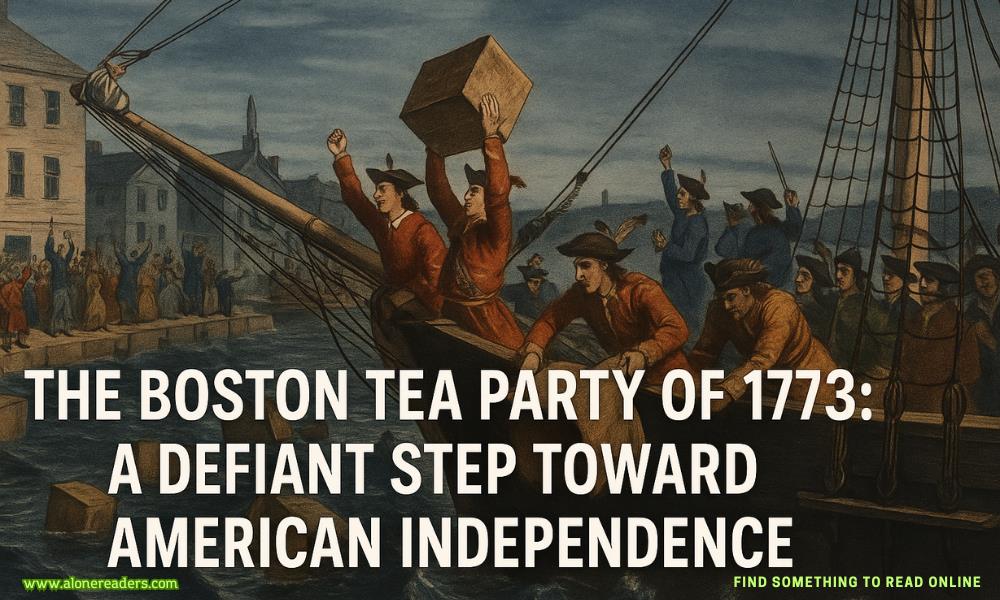
The Boston Tea Party, which occurred on the night of December 16, 1773, remains one of the most iconic events in American history. It was a defining act of protest by American colonists against British taxation policies and imperial rule. Far more than a simple act of vandalism, the event marked a turning point in colonial resistance, fueling revolutionary sentiments and setting the stage for the American War of Independence. To fully understand the implications of this dramatic event, it is essential to explore the economic pressures, political tensions, and ideological motivations that led to the destruction of British tea in Boston Harbor.
The roots of the Boston Tea Party lie in the broader context of British colonial policy following the Seven Years’ War (1756–1763). Britain had emerged victorious but heavily in debt. To ease its financial burden, the British Parliament began imposing taxes on its American colonies, starting with the Sugar Act of 1764 and the Stamp Act of 1765. These taxes provoked widespread resentment among colonists who argued that they were being taxed without representation in Parliament—a violation of their rights as English subjects. Although the Stamp Act was eventually repealed due to intense colonial opposition, Parliament retained the right to legislate for the colonies “in all cases whatsoever,” a claim that continued to breed discontent.
In 1773, Parliament passed the Tea Act, which allowed the financially struggling British East India Company to export tea directly to the American colonies without paying the usual duties in England. Although this act made tea cheaper for colonists, it was seen as a strategic move to undercut colonial merchants and reinforce Parliament’s authority to tax. The Tea Act reignited colonial anger, especially among groups such as the Sons of Liberty, who viewed it as a cunning ploy to force colonists to accept the legitimacy of British-imposed taxes.
Boston, a hotbed of revolutionary fervor, quickly became the focal point of resistance. The arrival of British tea ships—the Dartmouth, Eleanor, and Beaver—in Boston Harbor created a tense standoff. Governor Thomas Hutchinson, a loyalist, refused to allow the ships to leave without offloading their cargo, while colonial leaders insisted that the tea must not be landed. Over the course of several weeks, negotiations and public protests escalated, culminating in a dramatic decision by colonial activists to take matters into their own hands.
On the night of December 16, 1773, a group of roughly 60 men, some dressed in Mohawk disguises to conceal their identities and symbolically reject British rule, boarded the three ships under the cover of darkness. Working efficiently and without violence, they proceeded to open 342 chests of tea and dump their contents—amounting to over 90,000 pounds—into the icy waters of Boston Harbor. The entire operation took around three hours and was carried out without harm to the ships or crew. The participants took great care to avoid personal enrichment, and no tea was stolen.
The reaction to the Boston Tea Party was swift and polarized. In Britain, the destruction of private property was seen as an intolerable act of rebellion. In response, Parliament passed the Coercive Acts—known in the colonies as the Intolerable Acts—in 1774. These punitive laws closed Boston Harbor until the tea was paid for, dissolved Massachusetts’ self-government, and allowed British officials accused of crimes to be tried in England. These actions only inflamed tensions further and unified the colonies in their opposition to British overreach. The First Continental Congress was convened later that year, marking the first coordinated political action across the thirteen colonies.
Among American patriots, the Boston Tea Party was heralded as a bold assertion of liberty. It became a symbol of resistance and a rallying cry for those advocating for independence. The incident helped to forge a sense of shared identity among the colonies, galvanizing public support and drawing clear lines between loyalty to the Crown and the pursuit of self-governance. Importantly, the Boston Tea Party was not just a protest against a tax; it was a rejection of the principle of taxation without representation and a broader stand against imperial domination.
The legacy of the Boston Tea Party has endured for centuries. It has been commemorated in literature, art, and public memory as a turning point in American history. The phrase “Boston Tea Party” itself has become synonymous with defiance against tyranny and governmental overreach. Even in modern times, its symbolism has been invoked by various political movements across the ideological spectrum. The original location of Griffin’s Wharf, where the tea was dumped, is today a site of historical pilgrimage and education.
What made the Boston Tea Party particularly revolutionary was not only the act of rebellion but the strategic, moral, and philosophical messages it conveyed. The participants made it clear that they were not acting out of criminal intent but rather as defenders of their rights. Their methodical and disciplined conduct suggested that this was not a mob action but a calculated statement aimed at undermining British authority and provoking a broader movement for colonial self-rule.
It is also worth noting the economic implications of the event. The destroyed tea was valued at over £10,000 (equivalent to millions in today's currency), representing a significant financial loss for the East India Company. The British response—tightening control and punishing the colony—backfired by pushing moderates toward the revolutionary cause and igniting a chain of events that would lead to the outbreak of war at Lexington and Concord in 1775.
In conclusion, the Boston Tea Party was a critical milestone on the road to American independence. It crystallized colonial grievances, inspired revolutionary ideology, and provoked a political backlash that united the colonies against British tyranny. Far from being a spontaneous riot, it was a calculated act of resistance grounded in Enlightenment principles of liberty and justice. The event continues to serve as a reminder of the power of collective action and the enduring human desire for freedom and self-determination.